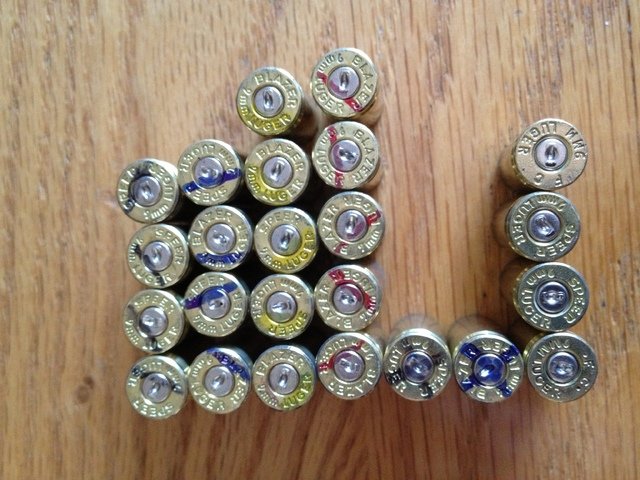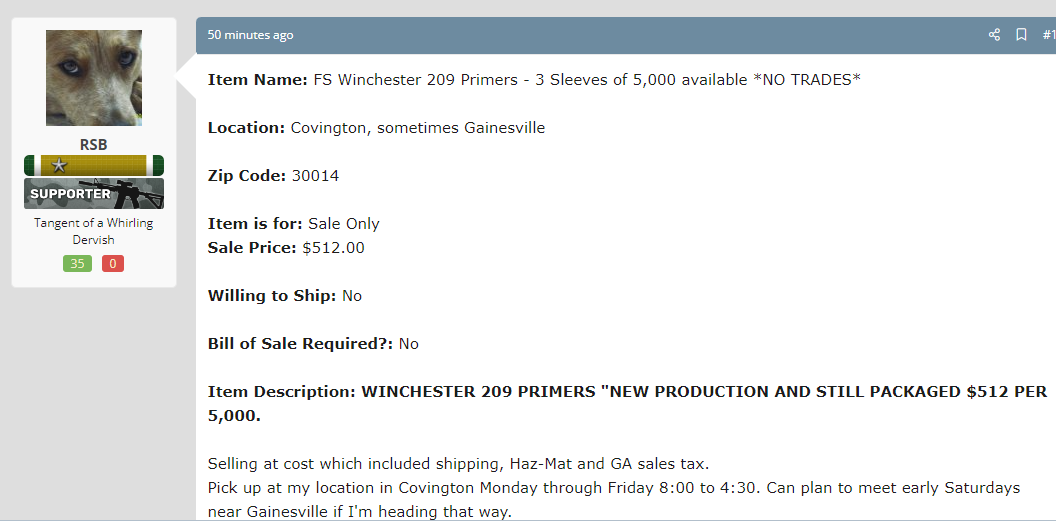Made up my first batch of 9mm following the Hornady handbook of cartridge reloading 9th edition. I would like some assistance to determine if the rounds I made are showing signs of overpressure. Also, the load data called for a C.O.L of 1.15 but I noticed that my rounds would vary anwhere from 1.40 - 1.51 using mixed brass. Is this anything I should worry about? The rounds that gave me the best accuracy were at the vary minimum of 4.0 while I shot 4.1 horribly. Is there any concern here with being at the starting load? The pistol still cycled and feed reliably. Thanks to everyone who has helped me get this far.
1 black strip = 4.0 gr
1 blue strip = 4.1 gr
yellow coloring = 4.2 gr
1 red strip = 4.3 gr
black X = 4.5 gr
blue X = 4.6 gr
non marked are factory rounds from the same gun for comparison.



1 black strip = 4.0 gr
1 blue strip = 4.1 gr
yellow coloring = 4.2 gr
1 red strip = 4.3 gr
black X = 4.5 gr
blue X = 4.6 gr
non marked are factory rounds from the same gun for comparison.







